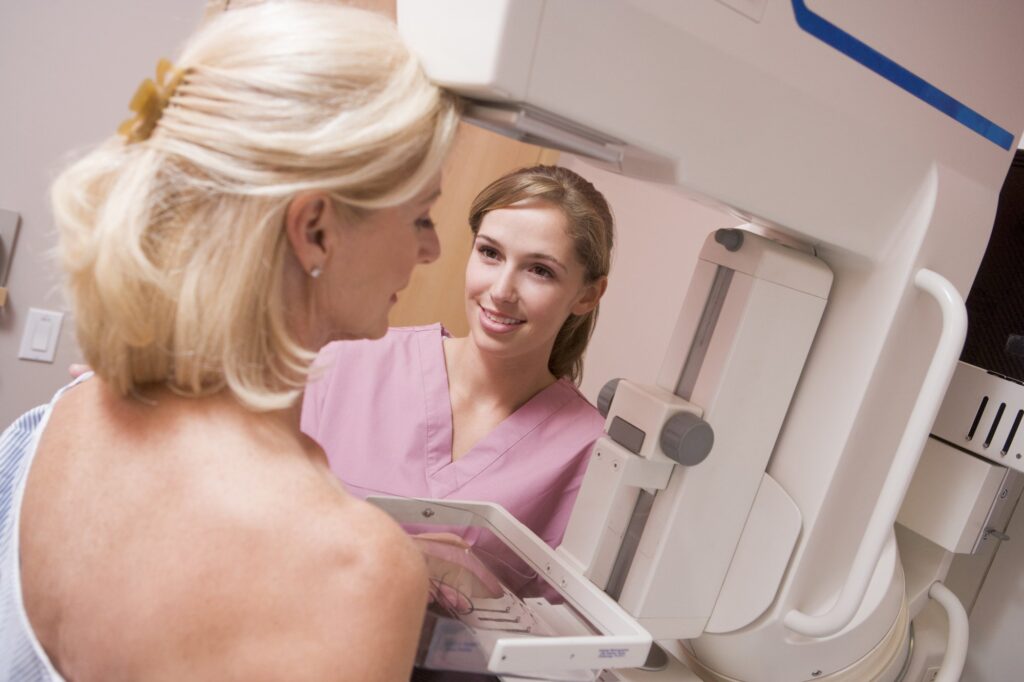
There were an estimated 297,790 new cases of breast cancer in 2023 alone. It made up 15.2% of all new cancer diagnoses.
Breast cancer also makes up 43,170 or 7.1% of all cancer deaths. That rate has been going down, and the 5-year survival rate is up to 90.8%.
This is in large part due to the many types of imaging available. Read our comparison guide to learn the differences between a breast ultrasound vs. a mammogram.
Getting a Mammogram
A mammogram is one of the most common forms of breast cancer screening. It can also identify other changes such as:
- Cysts
- Calcifications
- Masses
- Asymmetries
- Distortions
The patient’s breasts rest on a plate at chest level, and a second plate flattens them down and holds them still. The technologist takes four X-rays from the front and the side, two of each breast.
Your first one is known as your baseline mammogram. Most women should get one by age 40.
The general recommendation is to get another once a year. Deciding exactly how often depends on factors such as age and history. The results will be compared to your baseline.
Getting a Breast Ultrasound
A technologist holds a wand known as a transducer over the breasts during a breast ultrasound. Sound waves travel back and create an image.
The breasts don’t have to be flattened during the procedure. This makes it a more comfortable procedure.
Imaging Modality
The major difference between an ultrasound vs. a mammogram is their imaging modality or the way they gather images.
The average human is exposed to 620 millirems of radiation every day. Mammograms only give off 42 millirems. That may make the process unsafe for women who are young or pregnant.
A breast ultrasound only uses sound. This makes it safe enough for any patient.
Image Quality
Mammogram images are clear and precise. The way they move around in slices provides detailed images. 3D monograms provide an even better picture.
Breast ultrasounds may help spot issues in women with dense breasts. They can also miss details such as small calcium deposits known as microcalcifications. They’re some of the earliest signs of breast cancer and can be essential for early detection.
Reasons for an Ultrasound vs. a Mammogram
A mammogram is the first line of defense against breast cancer. It’s a yearly preventative measure for women over 40 and can determine the cause of any suspicious lumps or changes.
A breast ultrasound is not recommended as a screening tool for breast cancer prevention because of how much it can miss. Doctors order it as a follow-up after an abnormal mammogram. It can also guide the needle during a biopsy or while draining a cyst. It’ll only be ordered first if the woman is pregnant or under 20 years old.
Where to Get Your Regular Mammogram
Comparing a breast ultrasound vs. a mammogram helps show how different these seemingly similar tests are. The latter prevents breast cancer by spotting small details. The former is a follow-up treatment if anything abnormal shows up.
A regular mammogram can keep you from becoming another statistic. Book an appointment to get yours from the compassionate professionals at Women’s Health Associates today.

